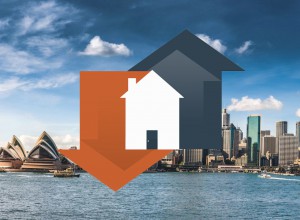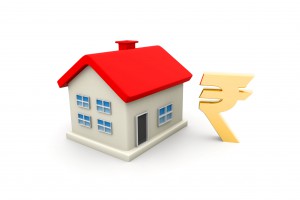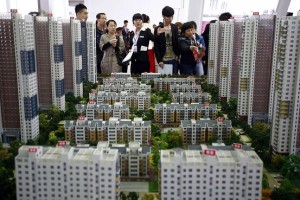There are more interesting articles, commentaries and analyst reports on the Web every week than anyone could read in a month.
Each Saturday morning I like to share some of the ones I’ve read during the week.
The weekend will be over before you know it, so enjoy some weekend reading.
The chart that helps explain Sydney, Melbourne property price slump
It’s no secret that Sydney and Melbourne are experiencing a bit of a property slump.
But what’s really going on?
An article for The Sydney Morning Herald explains the answer through on chart.
If you want to know why home prices in Sydney and Melbourne fell the fastest of any Australian capital city last year, this chart goes some way to answering that question.
From the National Australia Bank, it shows the value of new investor home loans issued across the country.
In New South Wales and Victoria, the value of investor lending has basically collapsed, helping to explain why total lending to investors nationwide has fallen by nearly 50 per cent in less than three years.
While there are many factors behind the steep decline, the impact of macro-prudential restrictions on investor and interest-only home loans is clearly evident in the chart.
In late 2014, APRA, Australia’s banking regulator, introduced a 10 per cent annual cap on housing credit growth to investors.
That was followed in early 2017 by a 30 per cent limit on interest-only lending as a proportion of all new loans.
Each time restrictions were introduced, the value of investor housing finance fell sharply, only interrupted briefly in 2016 and early 2017 as the RBA cut Australia’s cash rate from 2 per cent to 1.5 per cent in response to weak inflationary pressures.
While APRA has since abolished both the restrictions on investor credit and housing finance, greater scrutiny is now being applied to household expenses and outstanding debt levels among prospective borrowers.
Those supply-side factors, along with a deterioration in sentiment towards the outlook for prices, less foreign investment and uncertainty about possible changes to the tax treatment should the Australian Labor Party win the upcoming federal election, have started to impact on demand and help to not only explain why the value of home loan lending is falling, but also why home prices in Australia’s largest and most expensive cities are coming off the boil.
The trends in investor housing finance have also been seen in the value of owner-occupier home loans, although not to the same scale.
Read the full article here
Vacancies steady in February
Results show vacancy rates have steadied in February.
This Blog by Pete Wargent looks at the statistics.
Conditions and confidence weaken
The Reserve Bank in Australia is getting plenty of heat at the moment.
While jawboning is part and parcel of the gig, the problem is that markets and casual observers alike increasingly don’t appear to believe their upbeat assessments of unemployment falling all the way out until 2020, and inflation drifting back up towards the mid-point of the target.
The latest NAB business surveys showed that trading, profitability, and business conditions have all slipped badly, while consumer confidence readings have also taken a significant dive.
Total housing finance in January – in all fairness, relating to the period before the final Royal Commission report was released – was down more than 20 per cent from a year earlier – the biggest decline since the global financial crisis.
The RBA reckons that’s largely due to new dwelling supply, although nobody seems to believe that either.
The investor finance figures are only being held up by a high number of apartment settlements, and the reality is that the supply of credit has been quite severely curtailed.
Markets and economists are increasingly becoming convinced that the cash rate will be cut twice, down to just 1 per cent, with little assistance coming from fiscal stimulus.
Read the full article here
Australians are shunning debt to renovate their homes
It would seem we’re heading for an era of the DIY.
Statistics from an article on Business Insider indicates that many have opted to renovate their own property to avoid financial debt.
The more home improvement shows there are on Australian television, the less money is being borrowed to pay for renovations.
Indeed, you could almost make the case that there’s an inverse relationship between the two.
This chart from Commsec tells the story.
The dollar value of loans to upgrade Australian homes fell to the lowest level on record in January.
“Home renovating reality TV shows beware!,” said Ryan Felsman, Senior Economist at Commsec.
“The value of lending approvals for home alterations and additions have fallen to the lowest level since records began in July 2002 due to a combination of tightening lending standards, slower home loan approvals due greater scrutiny of household balance sheets, falling property prices and a desire to deleverage.”
On the latter factor — paying down debt — the RBA said that monthly mortgage repayments, based on offset account balances, were around 2.5 years ahead of schedule on average in early 2018.
While that doesn’t reflect the circumstances of individuals, it suggests many Australians are choosing to pay down their mortgage rather than spruce up their current digs.
Although borrowing to renovate is currently on the nose, the total value of renovation work approved in Australia stood at $8.37 billion in the 12 months to January, according to the ABS, just off the record level of $8.5 billion set in the year to September last year.
Read the full article here
Why the big drop in Chinese offshore?
When it comes to the Chinese Buyers Market – what is the current state of play?
In this article for Switzer, John McGrath looks at what’s really going on.
The latest annual report from the FIRB reveals a marked decline in foreign demand for Australian residential real estate.
It fell noticeably last year – in fact, it more than halved from $30 billion worth of approvals in 2016-17 to just $12.5 billion in 2017-18.
So why the big drop?
The FIRB report outlines the reasons: “State taxes and foreign resident stamp duty increases, foreign investment application fees, tightening domestic credit and increased restrictions on capital transfers in home countries.”
China was our biggest foreign real estate investor once again, although the value of Chinese residential and commercial purchases dropped from $15.3 billion in 2016-17 to $12.7 billion in 2017-18.
Mainland Chinese residential buyers, particularly investors, have disappeared for two main reasons.
The restrictions in cash outflows from China, making it harder to transfer an appropriate deposit to Australia.
Secondly, the relatively recent state taxes that have warned off potential buyers.
The taxes were implemented erroneously, in my opinion, based on the false assumption that overseas buyers were driving up local prices out of reach of Australian residents.
I think it’s now clear that wasn’t the case and hopefully these will change soon.
In a global economy, thriving countries need to be attracting international investment, not repelling it.
The FIRB report noted that $114 million in foreign investment application fees was collected in 2017-18.
The latest figures released by the NSW Government on its foreign stamp duty surcharge showed $154 million was collected in 2016-17 (Chinese buyers paid $126 million of it).
My question is: are these fees and taxes really worth what they’re costing us in lost investment potential?
History shows the bulk of individual foreign residential property purchases are under $1 million.
So, let’s say a foreign investor wants to purchase an $800,000 apartment in NSW.
Here are the fees he’s up for:
– $5,600 just to apply for FIRB approval to make the purchase
– An 8% state stamp duty surcharge of $64,000
– Regular stamp duty of $31,490
That’s more than $100,000 in taxes.
Doesn’t really convey a warm welcome, does it?
There were 10,036 approvals for residential property purchases in 2017-18 compared to 13,198 in 2016-17.
Victoria was by far the most popular state with foreigners, with 46% of approvals for residential property purchases, followed by NSW at 23% and Queensland at 17%.
Meantime, Australian Chinese buyers are as active as ever.
They’re now entrenched like anyone else as a local buyer and they are astute property purchasers.
Read the full article here
How to style your bedroom for a better sleep
Having trouble sleeping?
It could be the way your room is set up.
This article from Realestate.com.au looks at just some of the ways changing you bedroom can improve your sleep.
We’re celebrating World Sleep Day by helping you clock in a good night’s sleep with these expert tips and tricks.
World Sleep Day on March 15 is an annual day that celebrates snoozin’ in all its glory.
It’s also a chance to shine a spotlight on any unknown factors that may be hindering your sleep health.
If you’re anything like us, then you relish the moment your head hits the pillow at the end of a long day.
But many of us – between 33-45% of Australians – are experiencing inadequate sleep due to a wide range of factors.
While a healthcare professional will be able to provide you with the tools and advice on a clinical level, these expert tips below may be able to help you see sweeter dreams in the meantime.
Choose natural fibres
Clean sleeping is a thing, you guys. And when it comes to choosing your bedsheets, Pip Vassett, founder of In Bed, simply can’t stress enough the importance of opting for 100% natural fibres.
“While synthetic, poly-mix sheets may be a lot cheaper, sleeping in them essentially means you’re lying in man-made, plastic fibres, which makes for a pretty sweaty night’s sleep!”
Instead, she suggests lush linen or clean cotton sheets.
“Linen is super breathable and is so soft and cosy to sleep in. It’s also eco-friendly and has natural anti-bacterial and hypoallergenic properties.”
Pop a plant in your bedroom
The mere presence of plants has a calming effect which helps to lower anxiety symptoms and stress levels, says horticulturist and psychologist Gavin Cole.
“Some greenery in the bedroom is said to help people sleep more easily and perhaps enjoy a better quality slumber.”
In addition, the scent of some plants is known to enhance sleep. Take lavender, for example.
Invest in a quality mattress
A mattress is one of those ‘big’ purchases you make to symbolise the milestones in your life: Moving out of home, moving in with a partner, and upsizing when you have kids.
Pair this with the fact that we spend a third of our lives sleeping, and you’re left with a pretty good reason to really give it some thought.
UK brand Simba just launched their high-tech mattresses Down Under – much to the delight of the sleep deprived.
The Sleep to Live Institute took into account the body, profiling data of 10 million people to help formulate the Simba Hybrid – the brand’s highest-quality spring and memory foam mattress.
Five luxurious layers plus 2,500 vertical and horizontally moving springs ensure the best support possible, and quite literally the snooze of your dreams.
Look under the bed
Feng Shui consultant, Liz Higgins, stresses the importance of removing all clutter from your sleeping quarters to ensure a restful snooze.
“It is particularly important that you do not store anything under the bed as this is the energy you absorb while sleeping.
If you do have a bed with drawers or one that lifts up, store clean linen there,” she advises.
Switch off
While we love a smart home just as much as the next modern family, psychologist Jacqui Manningsays there should come a time in each day where technology takes a backseat.
Powering down from all devices in the last hour before you go to sleep is crucial for a restful slumber.
Smartphones, laptops, tablets and televisions all emit blue lights, which hinder your body’s natural production of the sleep hormone melatonin.
Read the full article here












No comments:
Post a Comment